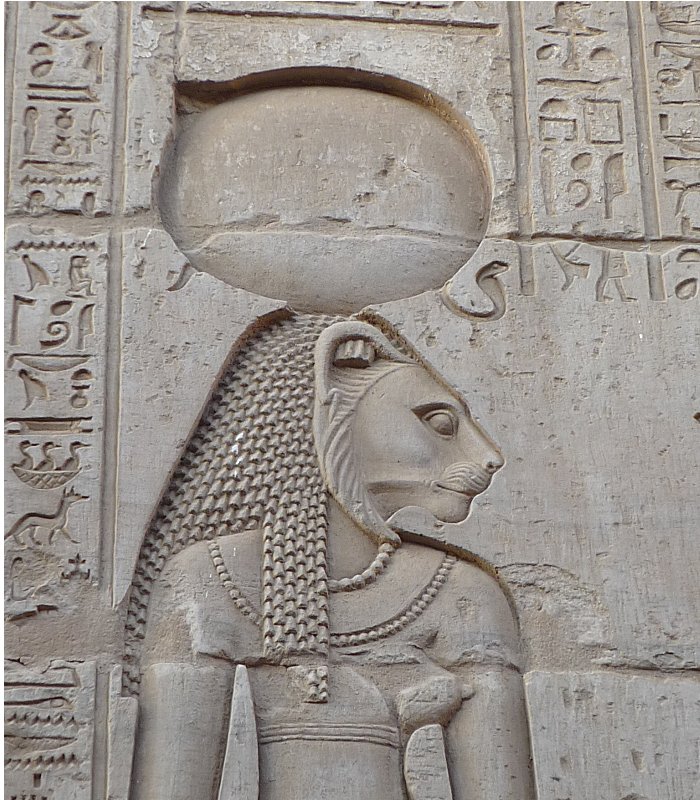Fearsome Sekhmet: Lion-Headed Egyptian Goddess And Sister Of Ptah
A. Sutherland - AncientPages.com - Known in ancient Egypt as Sekhmet, she was frequently portrayed with a lion head surmounted by a uraeus and a solar disk.
Black granite statue of Goddess Sekhmet excavated in Thebes in Ramesseum 1405-1367 BCE (Late 18th_Dynasty). Egypt Penn Museum. Image credit: Mary Harrsch - CC BY-SA 4.0
Like many other Egyptian goddesses, Sekhmet had two contradictory aspects to her complex personality.
As the lion-headed goddess, the fearsome Sekhmet was destructive and dangerous, perfectly conforming to her name, which means "powerful" or "the female powerful one."
But this remarkable deity was also known to have a healing and protective role.
Sekhmet - the sister of Ptah, to whom she eventually got married, was believed to be the daughter of the sun god Ra and one of the most important manifestations of the "Eye" of Ra.
According to a myth, when Ra became old, he learned that humans began plotting against him, so he decided to send the fearsome Sekhmet to punish them by breathing fire.
Sekhmet was a weapon of vengeance, created from the fire in Ra's eye, and the purpose of this creation was only one: the destruction of those who disobeyed Re. As the goddess of healing, Sekhmet had the power to ward off diseases; she was even called "Sekhmet, mistress of life."
This aspect of Sekhmet's personality was prevalent among many Egyptian kings who considered her a powerful military patroness and a symbol of their strength in the battles they fought.
Wall relief of Sekhmet, Kom Ombo Temple, Egypt. Image credit: I, Rémih - CC BY-SA 3.0
Sekhmet was their spirit, present with them everywhere like the hot winds from the desert, which were said to be the "breath of Sekhmet."
Queens, priests, priestesses, and healers called her. Her power and strength were needed everywhere. Sekhmet was "The Incomparable One".
Her personality - often linked with other deities - was very complex. Some researchers suggest that the mysterious Sphinx represents Sekhmet, and many legends and myths say she was present at the time of the creation of our world.
Sekhmet was often closely related to Hathor, a woman with a bovine head, the goddess of love, and the deity of dance, music, and happiness, and linked with Mut, the great mother and queen of the gods and the Theban goddess.
She was known as the goddess with many names; she was, for example, "The Devouring One," "Warrior Goddess," "Lady of Jubilation," "The Beautiful Light," and "Protectress of the Divine Order," "The Beloved of Ptah," just to name a few.
Her main cult center was in Memphis, but she also had many temples in other locations across Egypt.
"It is believed that Amenhotep III (1390-1352) had 730 statues of Sekhmet erected in his mortuary temple in Western Thebes.," write Candace C. Kant and Anne Key in "Heart of the Sun: An Anthology in Exaltation of Sekhmet."
"It is thought that there was one seated and one standing Sekhmet for each day of the year, possibly to soothe Her or to invoke Her protection at the most unstable times of the day, sunrise and sunset…."
These impressive statues were carved from hard, black granite (diorite) and depict the powerful Sekhmet standing or sitting with a papyrus scepter. The rite of "appeasing Sekhmet" was performed by her priests to battle diseases and epidemics. At the same time, she feared that she might be harmed, especially since "the seven arrows of Sekhmet" were believed to bring troubles and bad fortune.
Many spells and small amulets were used for protection against her wrath.
Written by – A. Sutherland AncientPages.com Staff Writer
Updated on February 25, 2024
Copyright © AncientPages.com All rights reserved. This material may not be published, broadcast, rewritten or redistributed in whole or part without the express written permission of AncientPages.com
More From Ancient Pages
-
 Leonardo Da Vinci’s Mother Might Have Been A Slave – Here’s What The Discovery Reveals About Renaissance Europe
Featured Stories | Mar 30, 2023
Leonardo Da Vinci’s Mother Might Have Been A Slave – Here’s What The Discovery Reveals About Renaissance Europe
Featured Stories | Mar 30, 2023 -
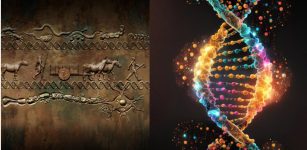 Ancient DNA Reveals How Yamnaya People Re-Wrote Northern Europeans’ Genetic Story 5,000 Years Ago
DNA | Jan 12, 2024
Ancient DNA Reveals How Yamnaya People Re-Wrote Northern Europeans’ Genetic Story 5,000 Years Ago
DNA | Jan 12, 2024 -
 Sacred Helgafell Mountain And The Story Of Torolv Mostrarskjegg
Featured Stories | Mar 13, 2024
Sacred Helgafell Mountain And The Story Of Torolv Mostrarskjegg
Featured Stories | Mar 13, 2024 -
 Early Māori Settlement On The Subantarctic Islands -Uncovering Some Of The Unknown
Archaeology | Jul 20, 2023
Early Māori Settlement On The Subantarctic Islands -Uncovering Some Of The Unknown
Archaeology | Jul 20, 2023 -
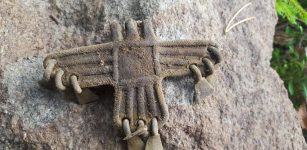 Unique Ancient Three-Headed Eagle Pendant Discovered In Finland: A Symbol Of Three Different Human Souls
Ancient Symbols | May 6, 2016
Unique Ancient Three-Headed Eagle Pendant Discovered In Finland: A Symbol Of Three Different Human Souls
Ancient Symbols | May 6, 2016 -
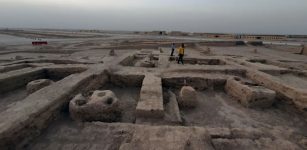 Ancient Parthian City With Hundreds Of Artifacts Unearthed In Iraq
Archaeology | Aug 16, 2022
Ancient Parthian City With Hundreds Of Artifacts Unearthed In Iraq
Archaeology | Aug 16, 2022 -
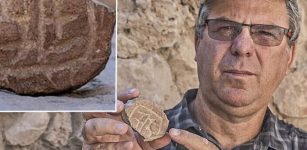 A Seal Impression Dated To Persian Period Discovered In The City Of David
Archaeology | Jul 3, 2020
A Seal Impression Dated To Persian Period Discovered In The City Of David
Archaeology | Jul 3, 2020 -
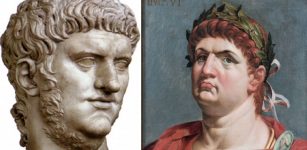 Who Was Pseudo-Nero?
Ancient History Facts | Apr 25, 2016
Who Was Pseudo-Nero?
Ancient History Facts | Apr 25, 2016 -
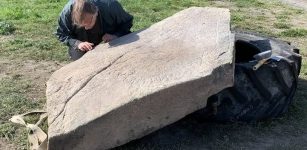 Unique Viking Age Runestone With A Cross And Animal Biting Its Own Tail Discovered By Farmer In Sweden
Archaeology | Sep 20, 2020
Unique Viking Age Runestone With A Cross And Animal Biting Its Own Tail Discovered By Farmer In Sweden
Archaeology | Sep 20, 2020 -
 Lost Biblical City, Ancient Treasure And Atlantis – Biblical And Archaeological Perspective
Biblical Mysteries | Apr 27, 2018
Lost Biblical City, Ancient Treasure And Atlantis – Biblical And Archaeological Perspective
Biblical Mysteries | Apr 27, 2018 -
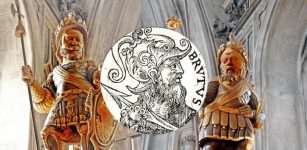 Brutus Of Troy: First King Of Britain Or Just A Myth?
Featured Stories | Feb 16, 2016
Brutus Of Troy: First King Of Britain Or Just A Myth?
Featured Stories | Feb 16, 2016 -
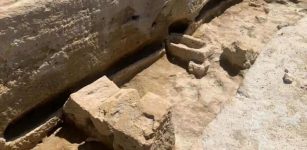 Rare Phoenician Necropolis Discovered In Andalucia, Spain Is Extraordinary, Scientists Say
Archaeology | May 2, 2022
Rare Phoenician Necropolis Discovered In Andalucia, Spain Is Extraordinary, Scientists Say
Archaeology | May 2, 2022 -
 Missing ‘Delmenhorst’: 17th Century Danish Warship From ‘Battle Of Fehmarn’ Found
Archaeology | Sep 22, 2020
Missing ‘Delmenhorst’: 17th Century Danish Warship From ‘Battle Of Fehmarn’ Found
Archaeology | Sep 22, 2020 -
 LIDAR Discovery Of Ancient City With 10,000 Mounds On The Pacific Island Of Tongatapu
Archaeology | Apr 16, 2024
LIDAR Discovery Of Ancient City With 10,000 Mounds On The Pacific Island Of Tongatapu
Archaeology | Apr 16, 2024 -
 Mystery Of The Ancient Talayot Sword
Archaeology | Sep 30, 2019
Mystery Of The Ancient Talayot Sword
Archaeology | Sep 30, 2019 -
 Ancient Native Americans’ Encounter With The Star People – An Otherworldly Rescue?
Featured Stories | Jul 20, 2021
Ancient Native Americans’ Encounter With The Star People – An Otherworldly Rescue?
Featured Stories | Jul 20, 2021 -
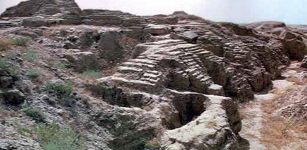 Ashur – First Capital And Powerful Religious Center Of The Assyrian Empire
Featured Stories | Jun 28, 2019
Ashur – First Capital And Powerful Religious Center Of The Assyrian Empire
Featured Stories | Jun 28, 2019 -
 Most Important Road In Scottish History Found In The Garden Of The Old Inn Cottage Near Stirling
Archaeology | Nov 16, 2023
Most Important Road In Scottish History Found In The Garden Of The Old Inn Cottage Near Stirling
Archaeology | Nov 16, 2023 -
 Kingdom Of Mitanni: Forgotten For Millennia But Once Great Power Of Ancient West Asia In 2000 BC
Featured Stories | Jun 20, 2023
Kingdom Of Mitanni: Forgotten For Millennia But Once Great Power Of Ancient West Asia In 2000 BC
Featured Stories | Jun 20, 2023 -
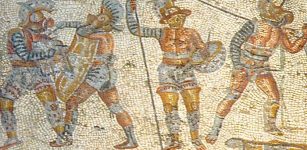 Were There Gladiators In Roman Britain? An Expert Reviews The Evidence
Featured Stories | Mar 14, 2023
Were There Gladiators In Roman Britain? An Expert Reviews The Evidence
Featured Stories | Mar 14, 2023


